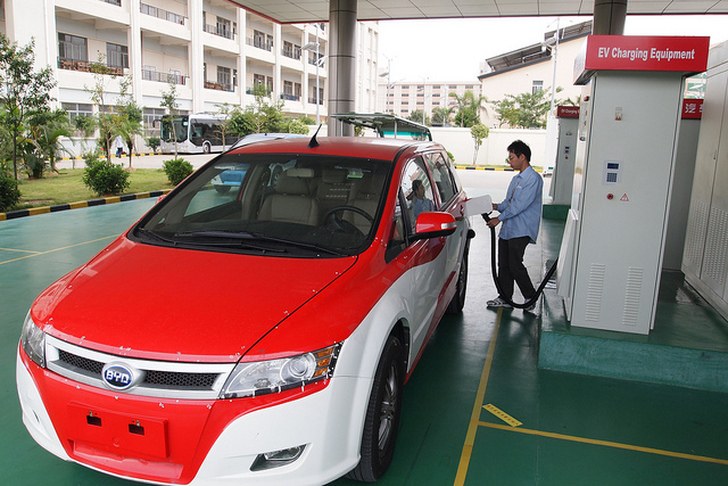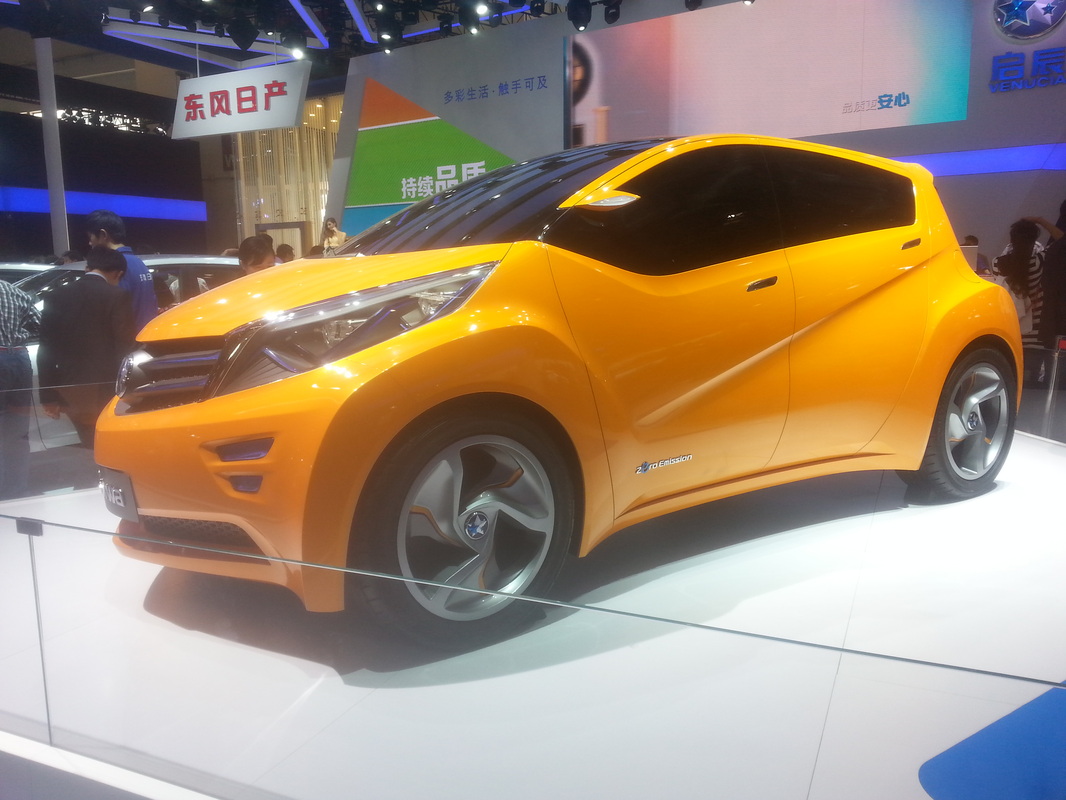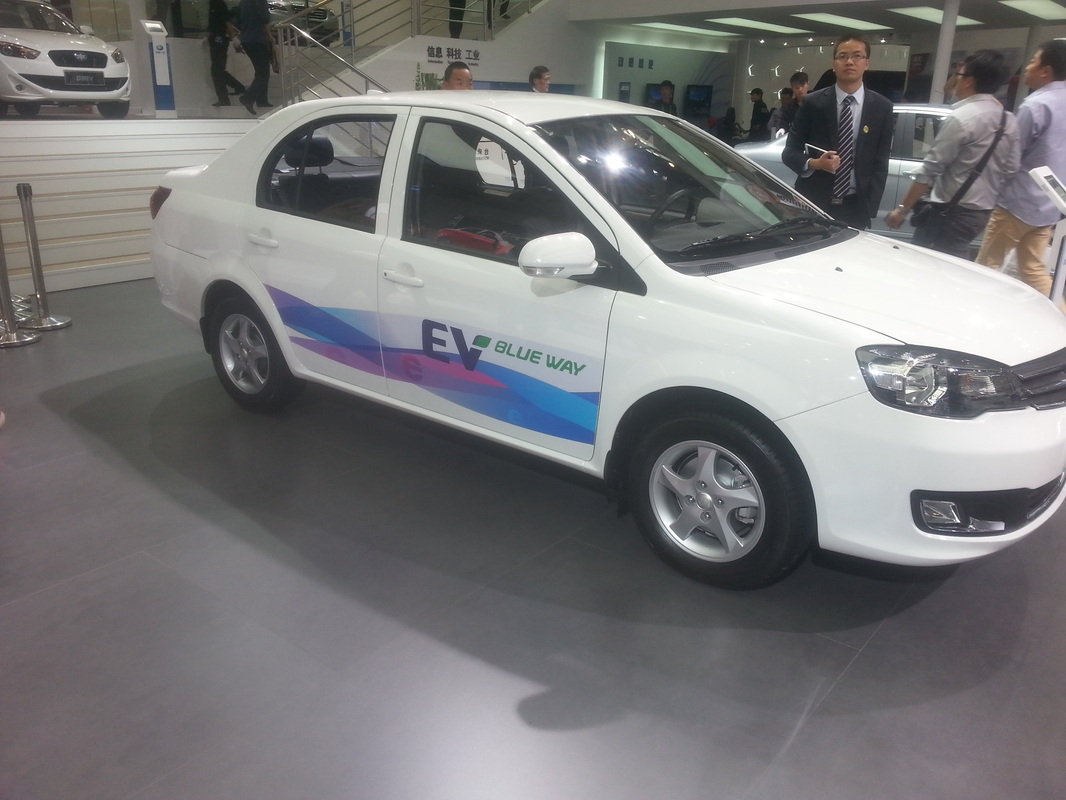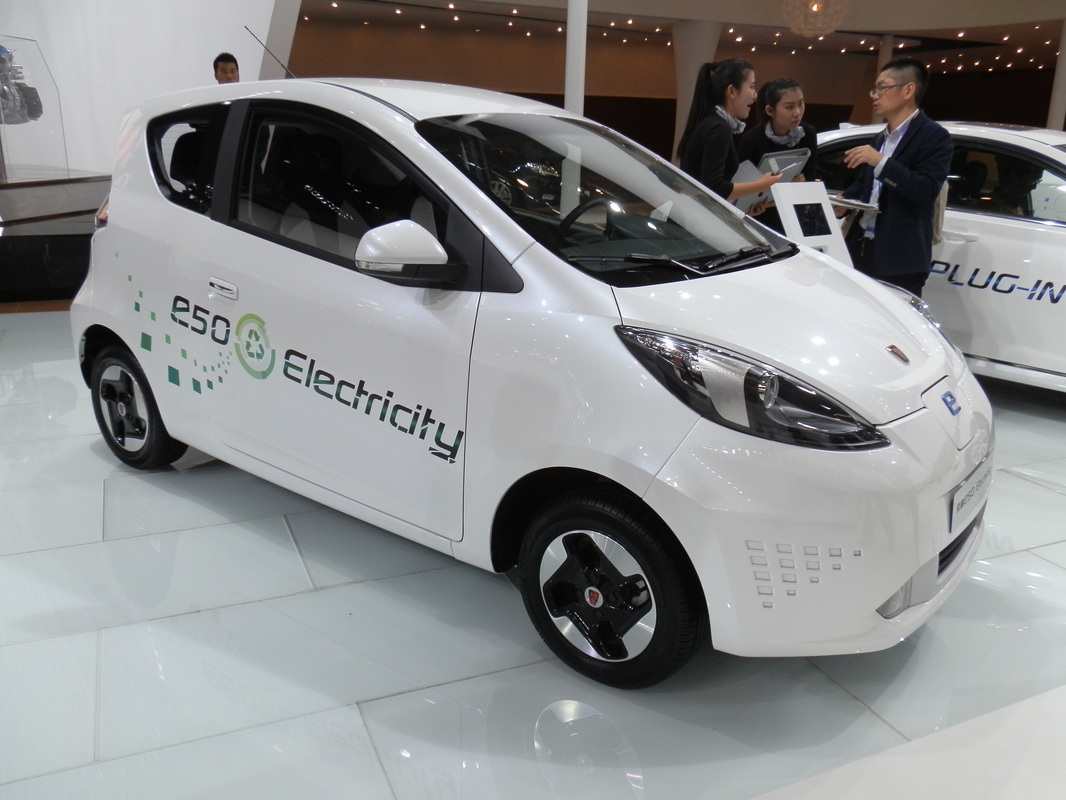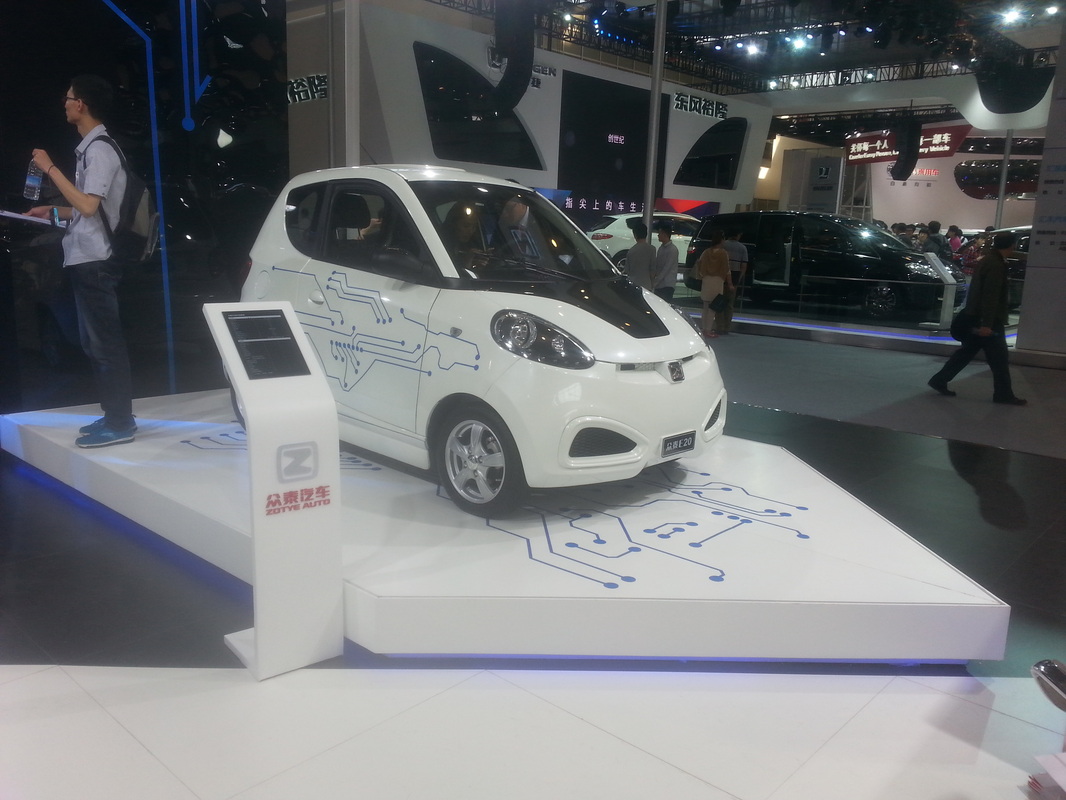By Alysha Webb
Automakers in China are talking about producing electric vehicles. They are even producing a few. But volume production of any EVs is still years off in China, I surmised after my recent trip to Beijing to attend the April 20 media day at Auto China.
China’s central government is, however, putting a lot of pressure on automakers to produce EVs. The problem is that Chinese consumers don’t want to buy electric vehicles. That is partly the fault of the central government. Though it talks a lot about promoting New Energy Vehicles, a category that includes battery electric, plug-in hybrid electric, and hydrogen fuel cell vehicles, Beijing hasn’t done one of the most important tasks to making electric vehicles more practical – vigorously implementing plans to build public charging networks.
Even in Beijing, where you would think the government would try to set an example, the public charging network is abysmally small. At the end of 2013 Beijing had only 69 charging stations.
So despite central government subsidies of up to 57,000 RMB (Rs 5,48,802) for a battery electric vehicle, and up to 33,500 RMB (Rs 322541) for a plug-in hybrid electric vehicle, as well as generous subsidies by some local governments, EV sales are small. In 2013, total battery-electric vehicle sales in China were 14,064 units according to the Chinese Association of Vehicle Manufacturers. Plug-in hybrid electric vehicle sales were only 3,038 units. Sales of both types were likely mainly to government fleets.
Still, there is hope for consumer EV sales in China. Tesla and Elon Musk have been getting a lot of press in China as Tesla has begun sales there. Despite my skepticism that Tesla sales in China will reach the numbers that Musk has thrown out, I do think the press coverage could be good for the segment as a whole. It will at least get people thinking about EVs.
And as more models are at least available for test drives, people will become more comfortable with the technology. Riding around in electric taxis will also help. PHEVs are likely to be the biggest sellers in China in the near to medium term as they avoid the pesky issue of range anxiety. Having a little gasoline -- or CNG, or diesel – engine to fall back on is helpful.
So despite central government subsidies of up to 57,000 RMB (Rs 5,48,802) for a battery electric vehicle, and up to 33,500 RMB (Rs 322541) for a plug-in hybrid electric vehicle, as well as generous subsidies by some local governments, EV sales are small. In 2013, total battery-electric vehicle sales in China were 14,064 units according to the Chinese Association of Vehicle Manufacturers. Plug-in hybrid electric vehicle sales were only 3,038 units. Sales of both types were likely mainly to government fleets.
Still, there is hope for consumer EV sales in China. Tesla and Elon Musk have been getting a lot of press in China as Tesla has begun sales there. Despite my skepticism that Tesla sales in China will reach the numbers that Musk has thrown out, I do think the press coverage could be good for the segment as a whole. It will at least get people thinking about EVs.
And as more models are at least available for test drives, people will become more comfortable with the technology. Riding around in electric taxis will also help. PHEVs are likely to be the biggest sellers in China in the near to medium term as they avoid the pesky issue of range anxiety. Having a little gasoline -- or CNG, or diesel – engine to fall back on is helpful.
Meanwhile, here are some of the electric vehicles I encountered at the Beijing show:
Dongfeng Venucia concept BEV:
If this looks suspiciously like a Nissan LEAF, there’s a reason for that. Dongfeng partners with Nissan in China. Venucia is joint venture’s own brand. This EV is supposed to go into production this year. But the same model in a less exciting color was shown as a concept two years ago as well... It seems development of a car that already exists is taking a while….
Dongfeng Venucia concept BEV:
If this looks suspiciously like a Nissan LEAF, there’s a reason for that. Dongfeng partners with Nissan in China. Venucia is joint venture’s own brand. This EV is supposed to go into production this year. But the same model in a less exciting color was shown as a concept two years ago as well... It seems development of a car that already exists is taking a while….
First Auto Works Blue Way electric sedan:
It’s not very exciting to look at, but perhaps FAW didn’t want anything to take away from the new Red Flag (Hongqi) models it was also showing in Beijing. Blue Way is a nod to FAW’s “Blue Journey Strategy,” which calls for the automaker to develop hybrid and electric vehicles in parallel under the principle of “technical possibility, economic feasibility, and environmental tolerance.” The strategy states that FAW will make full use of mature domestic and foreign technical resources while also innovating. A side note: FAW partners with Volkswagen in China. The pure electric Golf concept VW started showing in Europe a few years ago is called the Golf blue e-motion. Just sayin’….
It’s not very exciting to look at, but perhaps FAW didn’t want anything to take away from the new Red Flag (Hongqi) models it was also showing in Beijing. Blue Way is a nod to FAW’s “Blue Journey Strategy,” which calls for the automaker to develop hybrid and electric vehicles in parallel under the principle of “technical possibility, economic feasibility, and environmental tolerance.” The strategy states that FAW will make full use of mature domestic and foreign technical resources while also innovating. A side note: FAW partners with Volkswagen in China. The pure electric Golf concept VW started showing in Europe a few years ago is called the Golf blue e-motion. Just sayin’….
SAIC EVs:
Alone among the automakers at the show, SAIC (Shanghai Automotive Industry Corporation) showed a complete lineup of new energy vehicles, ranging from pure electric to hybrid electric to hydrogen fuel cell. It did the same thing at last year’s show in Shanghai. SAIC is actually selling its Rowe e-50 BEV and Roewe 550 PHEV. But sales have thus far been negligible.
Alone among the automakers at the show, SAIC (Shanghai Automotive Industry Corporation) showed a complete lineup of new energy vehicles, ranging from pure electric to hybrid electric to hydrogen fuel cell. It did the same thing at last year’s show in Shanghai. SAIC is actually selling its Rowe e-50 BEV and Roewe 550 PHEV. But sales have thus far been negligible.
Denza EV:
The electric vehicle joint venture formed in 2010 between China’s BYD Auto and Daimler AG is inching towards production of its first model. The BEV claims a range per charge of 300 kilometers and is priced at 369,000 RMB (Rs 35,52,771). It is scheduled to go on sale in mid-2015, though we shall see.
The electric vehicle joint venture formed in 2010 between China’s BYD Auto and Daimler AG is inching towards production of its first model. The BEV claims a range per charge of 300 kilometers and is priced at 369,000 RMB (Rs 35,52,771). It is scheduled to go on sale in mid-2015, though we shall see.
Zotye EV:
In the “smallest EV I saw” category is the Zotye EV. This little bug of an all-electric car is from Zotye, a small SUV maker in eastern China. It is marketed as family-use short-distance vehicle. Just like the Indian made e2o only has two doors, and two front seats though there is space in the back. Its top speed can’t be much – power comes from a 12hp electric motor. Zotye also sells a BEV van.
In the “smallest EV I saw” category is the Zotye EV. This little bug of an all-electric car is from Zotye, a small SUV maker in eastern China. It is marketed as family-use short-distance vehicle. Just like the Indian made e2o only has two doors, and two front seats though there is space in the back. Its top speed can’t be much – power comes from a 12hp electric motor. Zotye also sells a BEV van.
Lessons for India?
Its safe to assume that just providing subsidies to consumers wont be enough. The Indian government needs to have a comprehensive plan to create 'electric highways' - that is add CHAdeMo quick chargers in highways between major cities. Once we have electric highways, no one can complain about the limited range of EV's.
Elimination of taxes for EV manufacturers to reduce costs and pushing auto companies to release more EV's would help the industry.
The Chinese are doing so much but still they can and will do more.
Will the Indian government learn from the mistakes of the Chinese and provide more balanced support to the EV industry?
Its safe to assume that just providing subsidies to consumers wont be enough. The Indian government needs to have a comprehensive plan to create 'electric highways' - that is add CHAdeMo quick chargers in highways between major cities. Once we have electric highways, no one can complain about the limited range of EV's.
Elimination of taxes for EV manufacturers to reduce costs and pushing auto companies to release more EV's would help the industry.
The Chinese are doing so much but still they can and will do more.
Will the Indian government learn from the mistakes of the Chinese and provide more balanced support to the EV industry?

